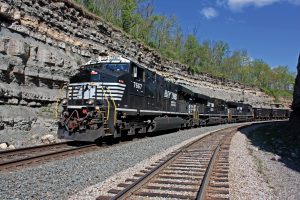St. Louis area celebrates Eads Bridge rehab project
Written by Mischa Wanek-Libman, editor
Federal and state elected officials joined local residents and Bi-State Development Agency of the Missouri-Illinois Metropolitan District (Metro Transit) to celebrate the completion of the Eads Bridge rehabilitation project on Oct. 7.
Originally completed in 1874, the Eads Bridge was the first steel structure bridge project in the United States and one of the first structures of any kind in the county to extensively use steel as a construction component. The four-year, $48-million project was the first full-scale rehab project in the bridge’s 142-year history and was vital to ensure the bridge’s service for auto and transit users.
Metro Transit acquired the rights to the bridge and currently shares ownership with the city of St. Louis, Mo. St. Louis is responsible for the road deck, while Metro Transit is responsible for everything else.
“The team was able to achieve a continuous operation and a beautiful restoration of the bridge,” said Metro Transit Executive Director Ray Friem. “We kept the train moving over this beautiful river we are standing on. During the process, we had to overcome many unknowns. It was a 140-year-old bridge, with different technologies that had inaccurate drawings. I want to take a moment to recognize the people who made this possible. Today, we celebrate you, your accomplishments, your skills, and your courage to work high above this raging river in order to unify a region, unite two states and build this bridge to and for the future.”
Construction began in 2012 with the first half of the project focusing on the north side of the bridge, which was successfully completed and opened to traffic on Oct. 20, 2014. Up to nine layers of old paint and rust were removed to the bare metal, then the stripped-down structure was primed with a rust inhibitor and topped with an anti-corrosion coating that will extend the life of the bridge for more than 50 years. The structural flooring system for Metro Transit was completely replaced with new rails and ties and messenger and contact wire were replaced with new overhead conductor rail. Support steel that dates to the 1920s or older was replaced, the entire superstructure was blasted and painted, and the Metro Transit track system was upgraded, including rail, ties and installation of new Overhead Conductor Rail.
Metro Transit trains continued single-track operation throughout construction and both of the bridges tracks returned to operation on June 13, 2016.
Project organizers said federal funds supported 91 percent of the $48-million cost of the total project, with $27 million coming from the American Reinvestment and Recovery Act.





